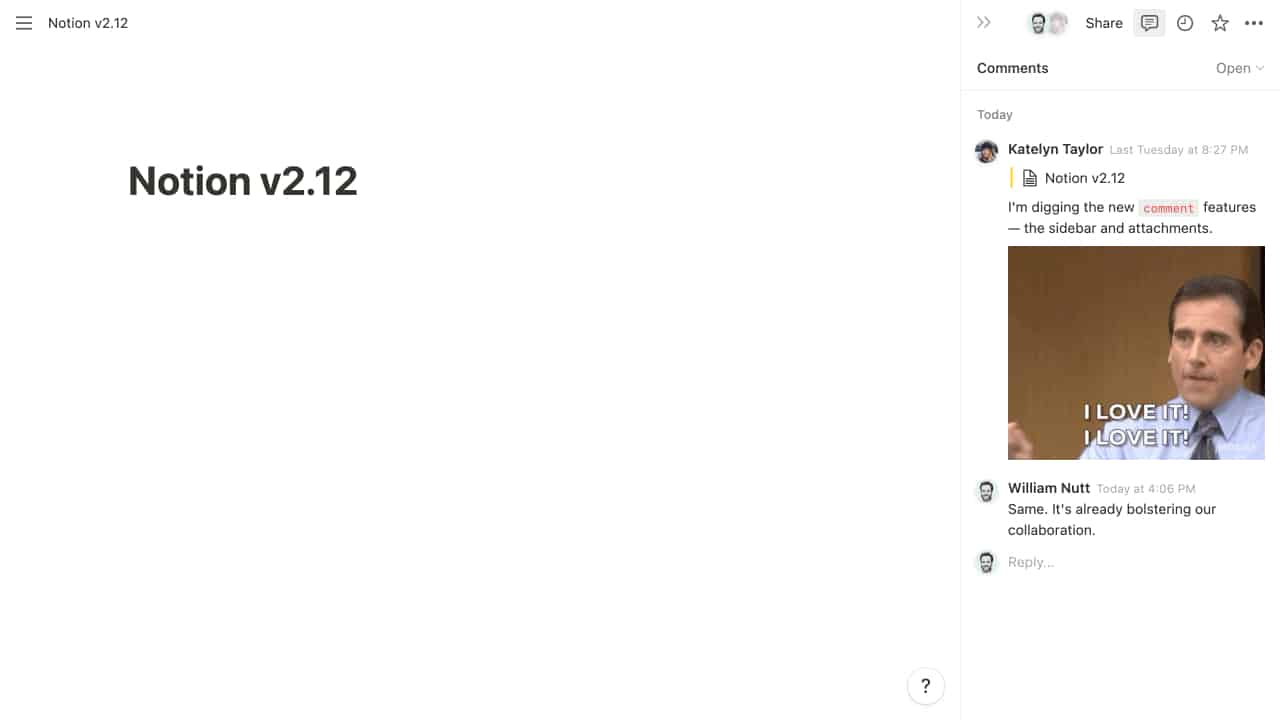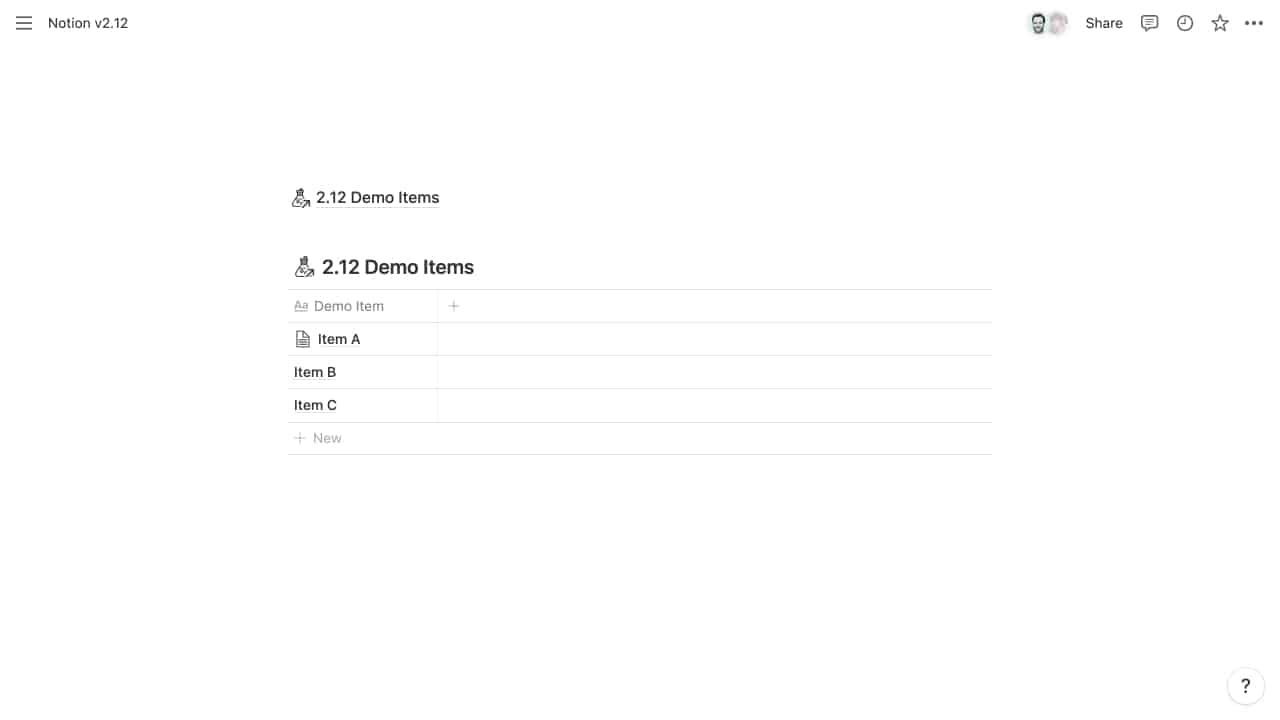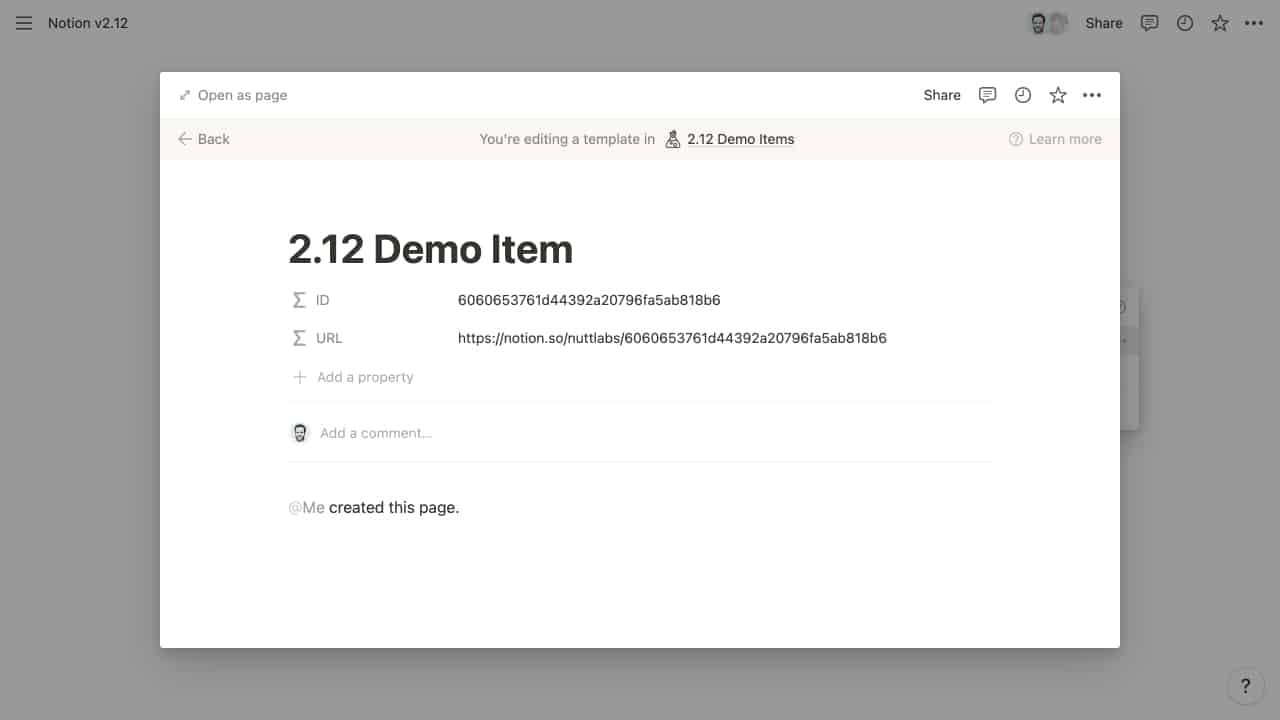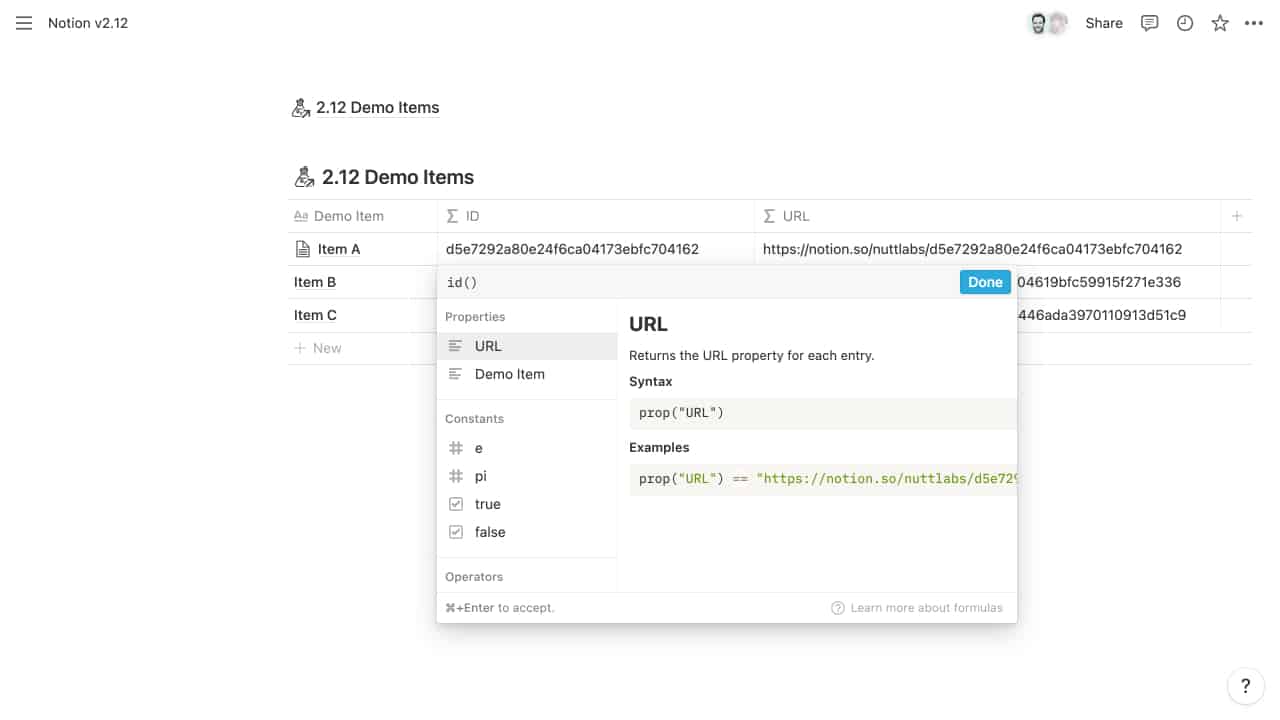Headlined by a new comment sidebar, Notion 2.12 packages a variety of features that bolster collaboration or streamline functionalities.
Enhanced Comments

In its effort to underscore the app’s utility for teams, Notion added three notable enhancements to its Comment feature.
Sidebar
Click the speech bubble at the top of the app to toggle a rightward sidebar. The sidebar displays all of the page’s comments in chronological order. You can reply directly within the sidebar and click any comment to jump to it within the page.
At the top of the sidebar, you can toggle between Open and Resolved comment threads.
Attachments
When composing a comment, click the paperclip icon to attach a file. When you attach an image, the image displays within the comment.
Links
Link to any comment with its unique URL: Hover over the comment to access its ••• menu, then choose Copy link.
Copy and Paste Columns
Copying and pasting multiple blocks now preserves their column arrangement.
That includes pasting into toggles. Previously, creating columns within toggles required a hacky workaround, but you can now simply arrange the content outside the toggle, then cut and paste.
Condensed Icons for Linked Pages and Databases

In Linked Databases, Link to Page blocks and in-line page mentions, the arrow now overlays the icon. Prior to the update, the arrow as adjacent to the icon, which seems clunky in retrospect.
@Me in Database Templates

When you @-mention “me” within a database template, the mention will be replaced with the signed-in user when then template is used.
For example, say a template for a Companies database includes “@Me.” If I created a new company with the template, that “@Me” becomes “@William Nutt.”
The id() Function
This feature was unannounced by Notion but spotted in the timeframe of Version 2.12.

In Notion, each item of a database is a page, and every Notion page has a unique ID. Those IDs are used in numerous ways. Here are a few:
- They determine the page’s URL.
- They serve as the underlying values of Relation properties.
- They’re targeted by automation tools like Zapier, Automate.io and Integromat.
Retrieving a page’s ID programmatically has long proven challenging, but the new id() function makes it a breeze. Within a Formula property, include id() (with no arguments) to return the respective item’s ID as a string.
That means you can use this formula to generate each item’s page URL (replace “nuttlabs” with the workspace slug):
"<https://notion.so/nuttlabs/>" + id()
I’m eager to see the Title property support formulas, which will make id() even more useful.
See Notion’s What’s New? page for all updates in Version 2.12. If you hit any snags as you experiment with the new features, feel free to tweet @WilliamNutt.